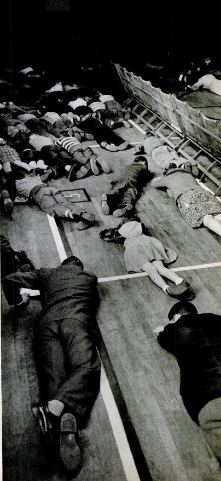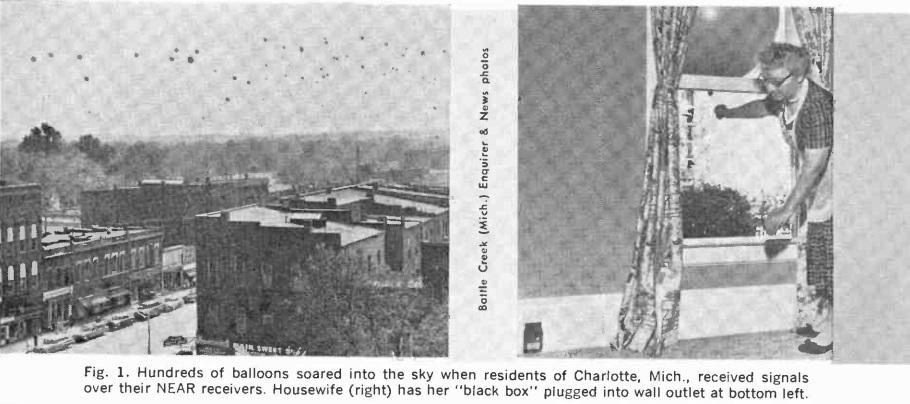 Shown here is second lady Lady Bird Johnson touring a fallout shelter at the home of John R. Bryan, Jr., 25014 Woodfield Drive, Damascus, Maryland.
Shown here is second lady Lady Bird Johnson touring a fallout shelter at the home of John R. Bryan, Jr., 25014 Woodfield Drive, Damascus, Maryland.
Because of his official duties as Training and Education Officer with the Office of Civil Defense, Mr. Bryan would be on duty at such time as the shelter was occupied, but he built it, at an expense of about $300 for the benefit of his wife, daughters, and mother in law.
According to the Washington Evening Star, the shelter was surprisingly cheerful looking, with yellow walls. It measured 10 by 11, with a height of six feet. Concrete blocks eight feet thick surrounded it. About 40 gallons of water were stored in the shelter, with an additional 160 gallons in tanks in the basement connected to the shelter by a hose. Food consisted largely of canned goods, with crackers and other items. A canned heat stove was on hand to heat meals, but when Bryan participated in a shelter occupancy experiment, it was discovered that this type of stove was very slow to heat the food. They also had a ratemeter and dosimeter, and as shown above, a portable radio. Little money was spent on furnishings, since most were hand-me-downs or camping gear.
The children slept on the double-decker cots, and one cot was left out during the day for seating. Another cot was unfolded at night for sleeping. A folding table rounded out the furnishings. Toilet facilities consisted of a portable toilet using plastic bags, which would be sealed in food cannisters after they had been emptied.
















